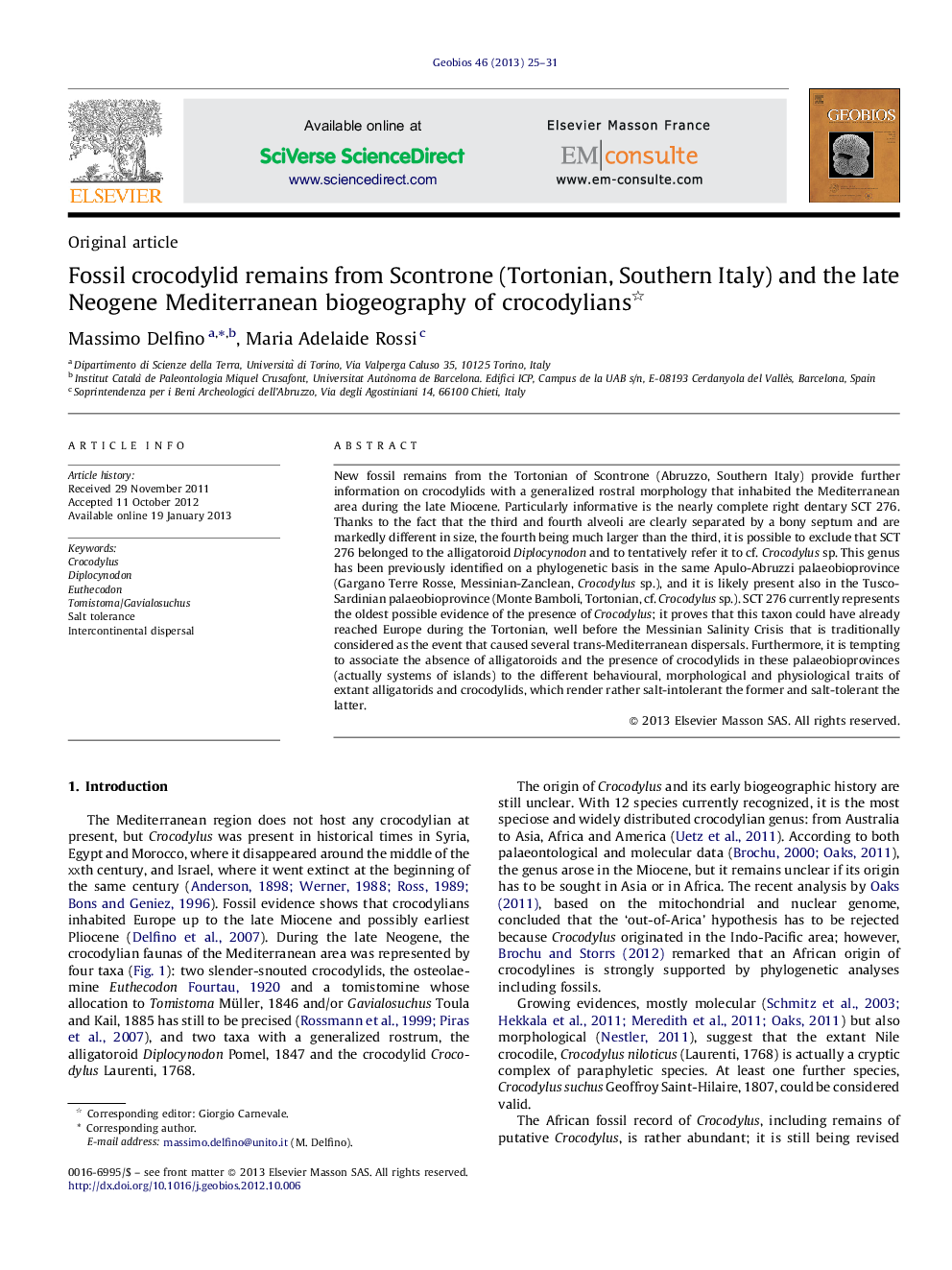| Article ID | Journal | Published Year | Pages | File Type |
|---|---|---|---|---|
| 4748237 | Geobios | 2013 | 7 Pages |
New fossil remains from the Tortonian of Scontrone (Abruzzo, Southern Italy) provide further information on crocodylids with a generalized rostral morphology that inhabited the Mediterranean area during the late Miocene. Particularly informative is the nearly complete right dentary SCT 276. Thanks to the fact that the third and fourth alveoli are clearly separated by a bony septum and are markedly different in size, the fourth being much larger than the third, it is possible to exclude that SCT 276 belonged to the alligatoroid Diplocynodon and to tentatively refer it to cf. Crocodylus sp. This genus has been previously identified on a phylogenetic basis in the same Apulo-Abruzzi palaeobioprovince (Gargano Terre Rosse, Messinian-Zanclean, Crocodylus sp.), and it is likely present also in the Tusco-Sardinian palaeobioprovince (Monte Bamboli, Tortonian, cf. Crocodylus sp.). SCT 276 currently represents the oldest possible evidence of the presence of Crocodylus; it proves that this taxon could have already reached Europe during the Tortonian, well before the Messinian Salinity Crisis that is traditionally considered as the event that caused several trans-Mediterranean dispersals. Furthermore, it is tempting to associate the absence of alligatoroids and the presence of crocodylids in these palaeobioprovinces (actually systems of islands) to the different behavioural, morphological and physiological traits of extant alligatorids and crocodylids, which render rather salt-intolerant the former and salt-tolerant the latter.
